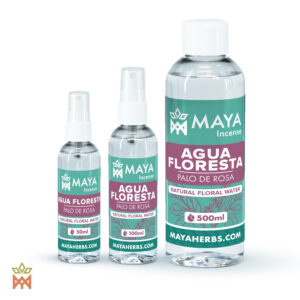Showing all 2 results
- € 7,50 – € 24,00 Incl. VATSelect options This product has multiple variants. The options may be chosen on the product page
Showing all 2 results
Botany of Aniba rosaeodora
Aniba rosaeodora, commonly known as Palo de Rosa or Brazilian rosewood, is a majestic tree native to the Amazon rainforest. Belonging to the Lauraceae family, this evergreen species can grow up to 30 meters tall, boasting a dense canopy of glossy, elliptic leaves. Its small, yellowish flowers are inconspicuous but rich in aromatic compounds, giving the tree its famed sweet, floral fragrance.
The source of rosewood essential oil
The heartwood of Aniba rosaeodora is the source of rosewood essential oil, highly valued for its warm, woody aroma with sweet, floral undertones. This oil is rich in linalool, a terpene prized in perfumery and aromatherapy. The oil has been used traditionally by Amazonian communities for its calming and spiritually uplifting properties, often in rituals aimed at connecting with higher states of consciousness. Indigenous healers also value it for treating skin conditions, respiratory issues, and even as a spiritual protector.
Sustainability
Beyond its therapeutic uses, the overexploitation of Aniba rosaeodora for its essential oil has pushed the species toward endangerment. Conservation efforts are now critical. That is why we at MAYA Ethnobotanicals focus on sustainable harvesting practices and reforestation initiatives.
Traditional Shamanic use of Palo de Rosa
In shamanic traditions, Palo de Rosa holds a revered status as a plant teacher, believed to enhance spiritual sensitivity and guide those seeking deeper connections with nature. Its delicate balance of beauty and power makes it a symbol of both the fragility and resilience of Amazonian ecosystems, reminding us of the need to preserve such treasures.


